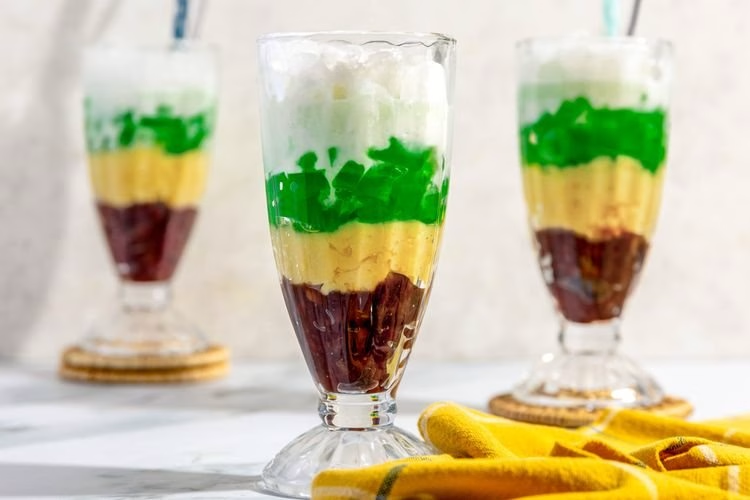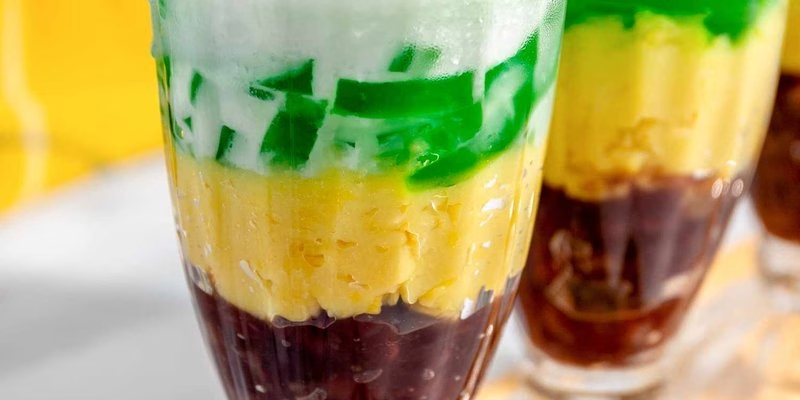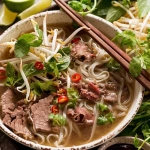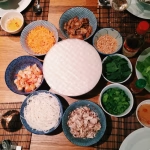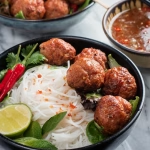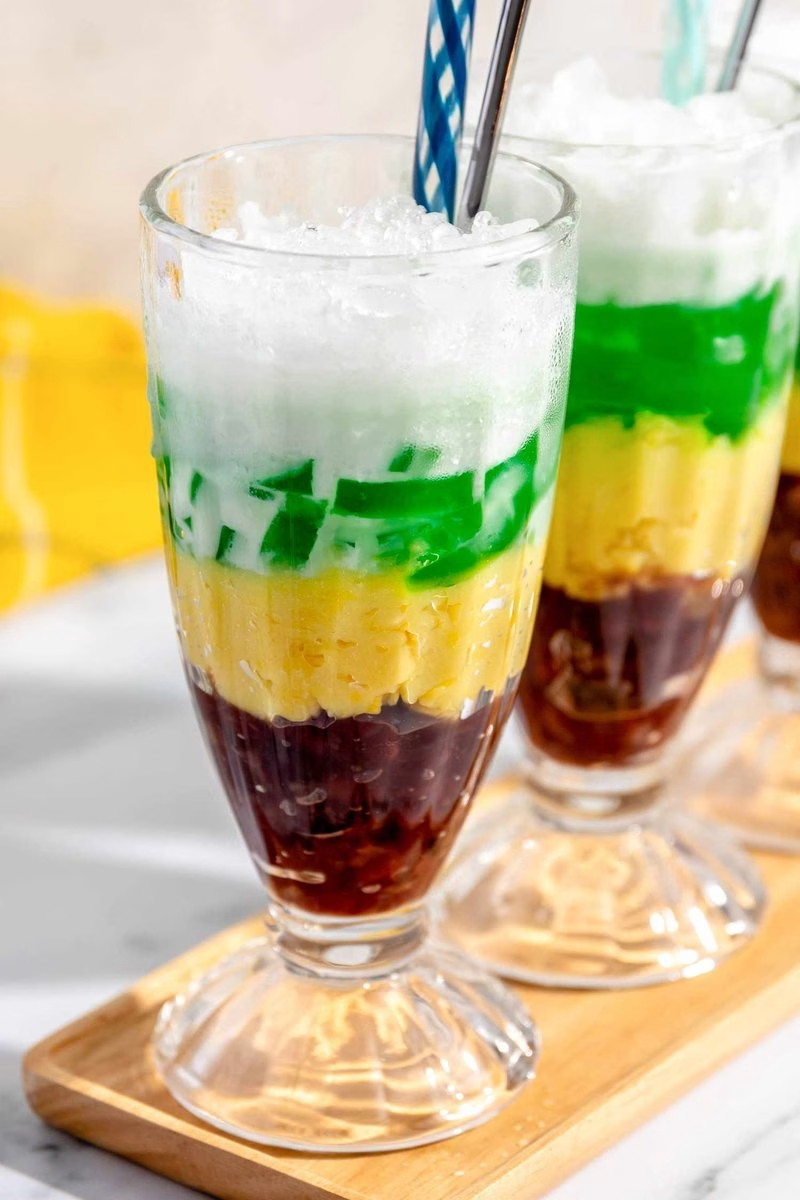
Have you ever tasted a dish that truly captures the essence of vibrant flavors and textures? Che Ba Mau, commonly known as the Vietnamese Three Color Dessert, is precisely that delight! This sweet treat has a colorful and rich history, originating from Vietnam, where it holds a significant place in traditional cuisine. Known for its layers of mung beans, coconut milk, and vibrant jellies, Che Ba Mau is not just a dessert; it’s a celebration of life and culture. In this article, you’ll learn how to make Che Ba Mau at home, explore its delicious ingredients, variations, and gather all the tips for the best experience.
Ingredients
| Ingredient | Measurement | Description |
| Mung beans (yellow) | 1 cup | *These beans provide a creamy texture and subtle sweetness to your Che Ba Mau.* |
| Red beans | 1 cup | *Rich in protein and fiber, these red beauties add a hearty component to the dessert.* |
| Green pandan jelly | 1 cup | *Made from pandan leaves, this jelly gives a unique flavor and beautiful color, making Che Ba Mau visually appealing.* |
| Coconut milk | 1 can (400ml) | *The creamy coconut milk ties all the flavors together, adding richness to your dessert.* |
| Sugar | ¾ cup | *Sweetens the dish without overpowering its natural flavors.* |
| Ice (crushed) | As needed | *Essential for serving this dessert cold, refreshing against the tropical flavors.* |
Step-by-Step Instructions
- Step 1: Prepare the Mung Beans – *Start by rinsing the yellow mung beans under cold water. Soak them for about 3-4 hours or overnight for the best results. Once soaked, steam them until soft, which usually takes around 25 minutes. You can blend them with a bit of coconut milk for a smoother consistency.*
- Step 2: Cook the Red Beans – *Rinse the red beans, soak them for a couple of hours, and then boil them in water until they are soft and tender, about 45 minutes. Once cooked, sweeten them with a bit of sugar and let cool.*
- Step 3: Make the Green Pandan Jelly – *Boil water and mix it with pandan extract and agar-agar powder, following the package instructions. Pour the mixture into a mold and allow it to set. Once firm, cut it into small cubes.*
- Step 4: Assemble the Che Ba Mau – *In a glass or bowl, layer the ingredients: first, the sweet mung bean paste, then the red beans, topped with the green pandan jelly. Pour coconut milk generously over the layers.*
- Step 5: Serve and Enjoy! – *Top with crushed ice for a refreshing touch. You can add more sugar if you like it sweeter. Enjoy your homemade Che Ba Mau while it’s cold, and relish the harmony of flavors!*
Pro Tips
- Experiment with Ingredients: Feel free to add fruits like jackfruit or taro for more variety and flavor in your Che Ba Mau.
- Perfect the Jelly: Depending on your region, you might find pandan extract or powder, both can work perfectly for your jelly.
- Enjoy it Chilled: For a more refreshing experience, prepare your Che Ba Mau a few hours before serving and refrigerate.
- Presentation Matters: Use clear glasses or bowls to show off the lovely layers of colors in your dessert.
Nutritional Information
| Nutrient | Per Serving (1 cup) |
| Calories | 300 |
| Protein | 9g |
| Carbohydrates | 60g |
| Saturated Fats | 5g |
| Fiber | 5g |
| Cholesterol | 0mg |
| Sugars | 20g |
| Fat | 12g |
FAQs
What is the best way to store Che Ba Mau?
Store Che Ba Mau in an airtight container in the refrigerator for 2-3 days. However, it’s best enjoyed fresh!
Can Che Ba Mau be made vegan or gluten-free?
Absolutely! This dessert is inherently vegan and gluten-free, making it a suitable option for various dietary preferences.
What are the best side dishes to serve with Che Ba Mau?
Try pairing it with Vietnamese spring rolls or a light fruit salad for a refreshing meal.
How long does it take to prepare Che Ba Mau?
Including soaking and cooking time, expect to spend about 2-3 hours, but much of that is hands-off while the ingredients cook!
Can I freeze Che Ba Mau for later?
Freezing is not recommended for Che Ba Mau, as the texture of the jellies and beans can change significantly when thawed.
Is Che Ba Mau only served in Vietnam?
While its roots are in Vietnam, Che Ba Mau has gained popularity worldwide, so you may find it in various Asian communities or restaurants.
What variations of Che Ba Mau exist?
Some versions add fruits, like mango or jackfruit, while others may use different kinds of beans or jellies for unique flavors.
How do I make Che Ba Mau less sweet?
Reduce the sugar in the recipe or opt for unsweetened coconut milk to control the sweetness to your liking.
Making your own Che Ba Mau at home is not just about creating a dessert; it’s about crafting a piece of Vietnamese culture. The vibrant colors and delightful flavors will undoubtedly impress your family and friends. So why not give it a shot? Try making Che Ba Mau at home, and don’t hesitate to share your experiences and any unique twists you might add! Have fun, and don’t forget to let us know how it turned out for you in the comments below!
